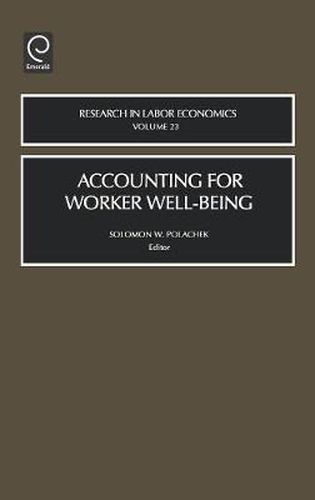Readings Newsletter
Become a Readings Member to make your shopping experience even easier.
Sign in or sign up for free!
You’re not far away from qualifying for FREE standard shipping within Australia
You’ve qualified for FREE standard shipping within Australia
The cart is loading…






This volume comprises 12 chapters, each accounting for a particular aspect of worker well-being. Among the issues addressed are: employee compensation, job loss, disability, health, gender, education, contract negotiation, and macroeconomic labor policy. The volume provides answers to a number of important questions. For example, why do smaller, newer companies better match CEO pay to profits than old, established corporations? Which demographic groups are most prone to job losses? What does marital status have to do with the glass ceiling? Does retiring from work increase one’s mental health? Does domestic violence drive women to work more? Do higher educational subsidies lead to more schooling than larger educational rates of return? In short, the volume addresses a number of important policy-related research issues on worker well-being facing labor economists today.
$9.00 standard shipping within Australia
FREE standard shipping within Australia for orders over $100.00
Express & International shipping calculated at checkout
This volume comprises 12 chapters, each accounting for a particular aspect of worker well-being. Among the issues addressed are: employee compensation, job loss, disability, health, gender, education, contract negotiation, and macroeconomic labor policy. The volume provides answers to a number of important questions. For example, why do smaller, newer companies better match CEO pay to profits than old, established corporations? Which demographic groups are most prone to job losses? What does marital status have to do with the glass ceiling? Does retiring from work increase one’s mental health? Does domestic violence drive women to work more? Do higher educational subsidies lead to more schooling than larger educational rates of return? In short, the volume addresses a number of important policy-related research issues on worker well-being facing labor economists today.